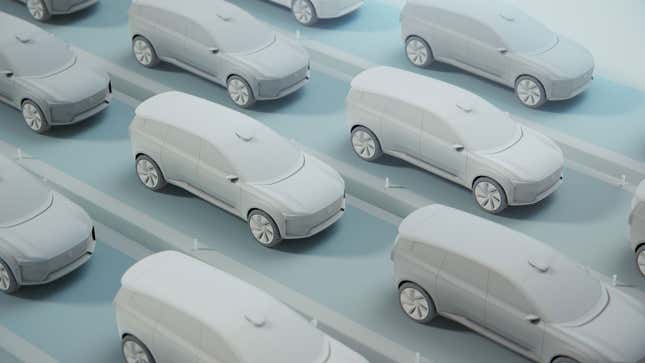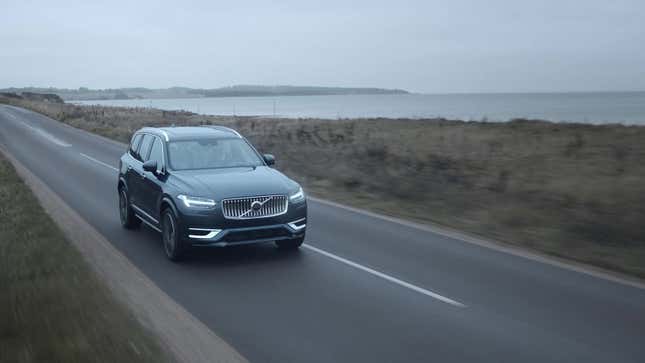The current Volvo XC90 has been around for a bit. The second generation of Volvo’s flagship SUV premiered in 2015 and is overdue for an update. Thankfully, if you’re in the market for a high-end SUV, you won’t have long to wait for Volvo’s latest contender, as the all-electric EX90 SUV will be unveiled in November.
The all-electric EX90 will sit alongside the XC90 in Volvo’s range when it launches. Ahead of the reveal of the car, Volvo has been sharing details of the safety features that it plans to pack into the new EV.
One of those headline features is a new array of sensors built into the EX90 to spot hazards and read the road ahead.
During a presentation about the new car, Volvo chief executive Jim Rowan explained that the new car would be fitted with eight cameras, five radars, 16 ultrasonic sensors, and a LiDAR sensor. That LiDAR sensor will be built into the roofline on the car, while the other cameras and sensors will be placed strategically around the rest of the EX90.
Rowan adds that the new system is all part of Volvo’s attempts to make driving as safe as possible. The sensors will be able to scan the road ahead and “detect pedestrians at up to 250-meter distances (820 feet) and something as small and dark as a tire on a black road 120 meters (394 feet) ahead,” all to aid in helping drivers avoid hazards in the road or bring the car to a stop when needed. The company claims that such tech will be able to “reduce accidents that result in serious injury or death by up to 20 percent.”
But there’s more to this system.

“It’s autonomous driving,” says Joachim de Verdier, head of safe vehicle automation at Volvo. “It’s a level three, level four system, so use cases for example are traffic jams, starting in low speeds, highways. There, the car can take over and do it itself.”
This means that at launch, the EX90 will have all the hardware in place for full self-driving capabilities. However, the system will initially use the sensors and cameras as a measure to keep drivers, passengers and pedestrians safe.
“It will not be available from a software perspective, but the car will be capable from a hardware perspective,” explains de Verdier.
“Then, when everything is validated and ready to go, we will launch the software over the air. And that will start in small regions, then we will expand geographically in places like the U.S., Europe and then continue to expand use cases.
“We will maybe start in very selective places and low speed, and then continue to learn, adapt and grow this feature.”

Volvo doesn’t have a timeline for when these features could roll out for EX90 drivers. Instead, it is focusing its message on the safety advantages that will be available at launch. As such, the system of scanners and sensors will always be on, assessing the road ahead for potential hazards.
According to de Verdier: “Autonomous driving is the final step. But before we reach the final step let’s use this really cool new technology to change the performance of active safety features.”
Volvo is set to unveil the EX90 in its entirety on November 9.